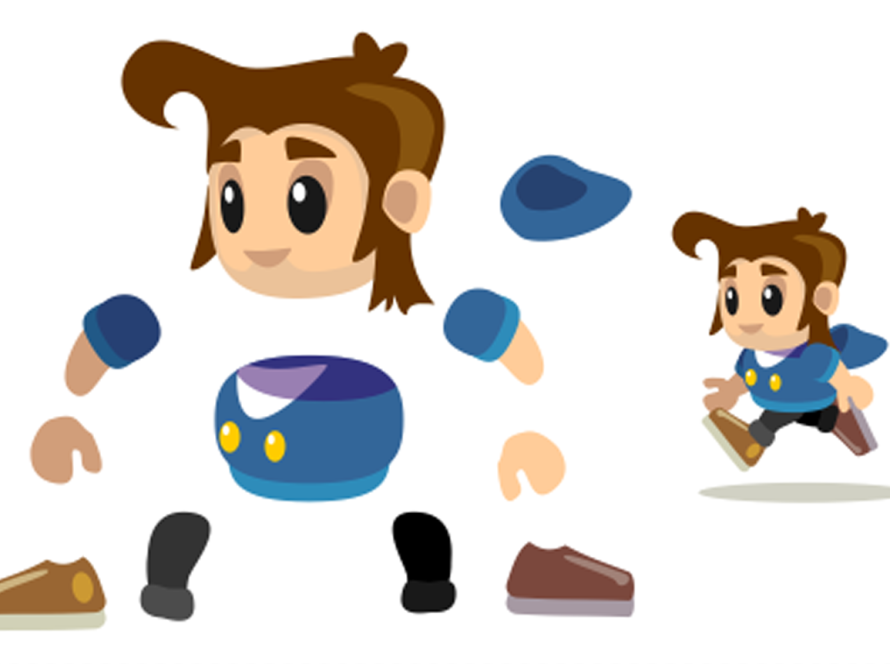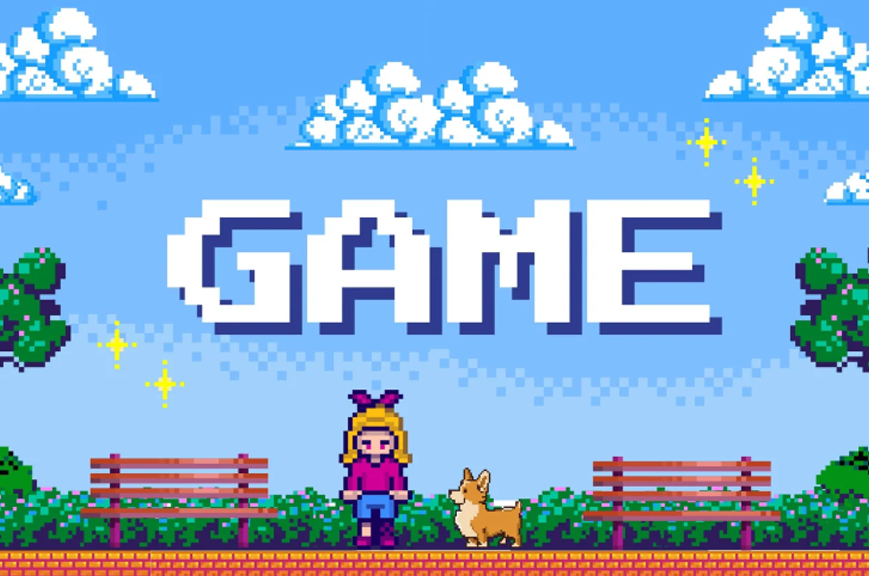Exploring different art styles in 2D games helps artists choose a fitting approach for their projects. In this breakdown, we’ll delve into seven different 2D game art styles, shedding light on their unique features. Join us as we delve into the intricacies of each style below.
Table of content:
- Flat
- Pixel
- Vector
- Geometric art
- Monochromatic
- Realistic 2D
- Cartoon
What is the art style in 2D games?
Art style is a crucial aspect in the development of 2D games. Indeed, this influence is noteworthy as it actively molds the player’s overall experience within the game. In the realm of 2D gaming, “art style” refers to the visual strategies and designs employed to craft the overall graphics and aesthetic appeal. This includes shaping the 2D game’s interface, character design, environments, animation techniques, and more.
The present state of 2D games showcases a plethora of varied art styles, adding to the vibrant visual diversity prevalent in the gaming industry. To delve further into this captivating landscape, let’s explore the upcoming section.
Exploring different art styles in 2D games
Here are seven fundamental art styles in 2D games that every artist should be acquainted with. In this context, we will thoroughly explore the distinctive features of each 2D game art style.
Flat art style for game
To begin, let’s delve into a straightforward and minimalist design style. As the name suggests, Flat art centers around the use of simple shapes paired with flat colors. Notably, this style avoids shadows and intricate details.
Overall, the flat art style finds widespread popularity in mobile games that prioritize simplicity. More specifically, it is commonly associated with casual games, puzzles, or those infused with humor. If you seek a smooth and user-friendly gaming experience, this style stands out as a prime choice.
Pixel art style for 2D games
Moving on, Pixel art stands out as a distinctive and widely embraced artistic style within the 2D gaming community. Essentially, artists utilize tiny pixels to craft images, with each pixel representing a specific point on the screen. This implies that generating an image necessitates a considerable number of pixels and a lower pixel count results in a reduced game resolution.
In a broader context, this art style demands precision and advanced skills from artists. To evoke a sense of nostalgia and vintage charm, artists must precisely determine the coordinates and colors of each pixel. Nevertheless, Pixel Art is resource-efficient and performs admirably on mobile devices compared to certain other graphic styles. Its nostalgic allure often makes Pixel Art a preferred choice for retro and indie 2D games.
Vector art
The Vector Art style has become a prominent graphic art trend in recent years. Utilizing Vector Art in the creation of 2D games offers numerous advantages. Primarily, this artistic style enables the design of games at high resolutions, ensuring that the quality is retained when scaling down or up.
Furthermore, Vector Art is frequently employed for crafting characters and environments. It allows for the creation of highly detailed and interactive characters, maintaining a light and engaging aesthetic. If there’s a need for adjustments or updates to game elements, Vector Art proves to be a time and effort-efficient choice.
For those prioritizing flexibility, high-resolution quality, and seamless adjustments in 2D game development, Vector Art emerges as the optimal and preferred choice.
Geometric 2d game art
Geometric art is commonly employed to create modern and visually appealing designs in 2D games. This game style is closely associated with basic geometric shapes such as circles, squares and triangles. Here are some fundamental characteristics of this art style that you should be aware of:
- Symmetrical patterns and repetition contribute to a sense of harmony and neatness in the game.
- The color palette is often diverse and carefully selected to create strong contrasts.
- Geometric art often imparts a modern and intellectual feel.
Overall, Geometric art style can be applied across various game genres, from puzzles to action games and even adventure games, depending on how artists combine and apply it to meet the specific requirements of the project.
Monochromatic art style
Monochromatic art is a unique style that every artist should be acquainted with. In this particular graphic approach, the focus lies on using a single dominant color to achieve visual consistency. As a result, players experience a distinctive visual ambiance when engaging with 2D games in the Monochromatic art style.
Given these characteristics, this art style is frequently employed in horror genres to intensify a somber and chilling atmosphere. Additionally, it is well-suited for abstract art, where the simplicity of colors serves to convey profound meanings.
Realistic 2D game art style
If your 2D game aims to realistically depict the world with intricate details, the Realistic art style is tailored for you. In this style, every aspect, including characters, environments, and objects, is portrayed with a high degree of realism. Shading, highlights, and textures are prominently used to evoke a sense of detail and authenticity.
However, Realistic 2D often demands more resources and might impact performance in mobile game applications. Additionally, animation in Realistic art style can pose a challenge. As a result, this art style is commonly utilized in genres like Role-Playing Game and adventure games to create a dynamic open-world experience.
Cartoon
Finally, This 2D game art style draws inspiration from traditional hand-drawn animations or cartoons. Typically, artists amplify the proportions of characters and objects to captivate visual attention or convey emotions.
Another characteristic of cartoon art styles is the use of bold and vibrant colors. Consequently, it delivers a cheerful and enjoyable gaming experience. In terms of applications, the Cartoon style can be incorporated into various 2D game genres, including platformers, puzzle games, adventure games, and role-playing games.
In Conclusion
In this article, we explored different art styles in 2D games. I trust that you’ve identified the distinct characteristics of each style. This understanding empowers you to explore the suitable 2D art style and seamlessly integrate it into your projects with effectiveness.




